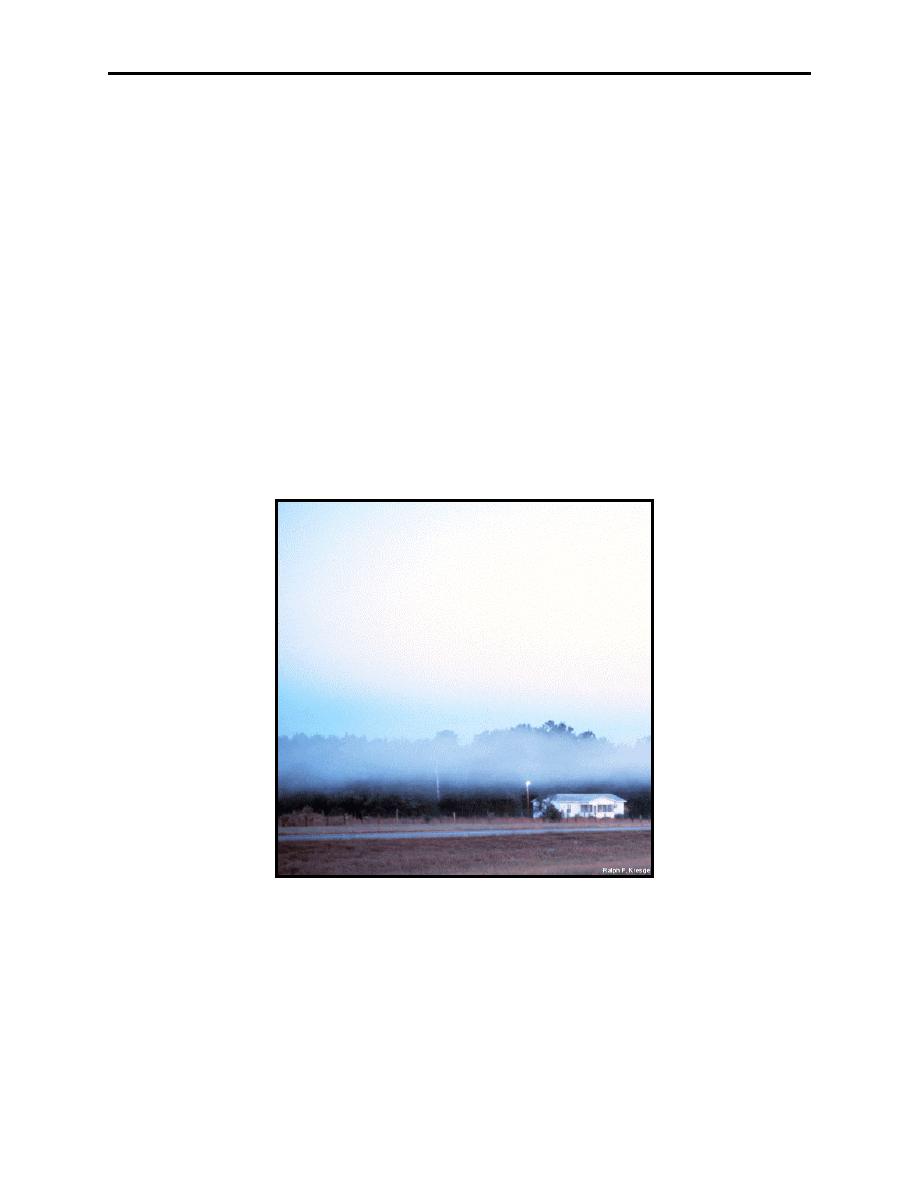 |
|||
|
|
|||
|
|
|||
| ||||||||||
|
|  CHAPTER FIVE
AVIATION WEATHER
513.
TYPES OF FOG
The two main types of fog are radiation and advection.
Radiation Fog
Radiation fog (Figure 5-18) occurs due to nocturnal cooling, usually on clear nights, when the
Earth releases relatively large amounts of radiation into the atmosphere, cooling the surface.
Cloudy nights, on the other hand, reflect most terrestrial radiation back to the Earth, reducing the
amount of cooling through a "blanket" effect. Radiation cooling actually begins after the
maximum daily temperature is reached, usually between 1530 and 1600 local time. Cooling
continues until sunrise or shortly after sunrise and it affects only the lower limits of the
atmosphere. If nocturnal cooling reduces the air temperature to the dew point temperature, fog
or low ceiling clouds will develop in the area. Winds play an important factor in fog formation.
Winds less than five knots usually results in shallow fog. Winds of five to ten knots will usually
cause dense fog. Winds of greater than ten knots will usually dissipate the fog and cause low
stratus or stratocumulus clouds to form. The other way radiation fog can dissipate is through
solar heating.
Figure 5-18 Radiation Fog
The rate at which the ground temperature can increase after sunrise affects the dissipation of fog
and low clouds. Vertically thick fog or multiple cloud layers in the area will slow down the
air overlying the ground. Once the surface air temperature rises, the ability of the air to hold more
water vapor increases and the fog particles tend to evaporate (Figure 5-19).
5-26
Weather Hazards of Turbulence, Icing, Ceilings, Visibility, and Ash Clouds
|
|
Privacy Statement - Press Release - Copyright Information. - Contact Us |